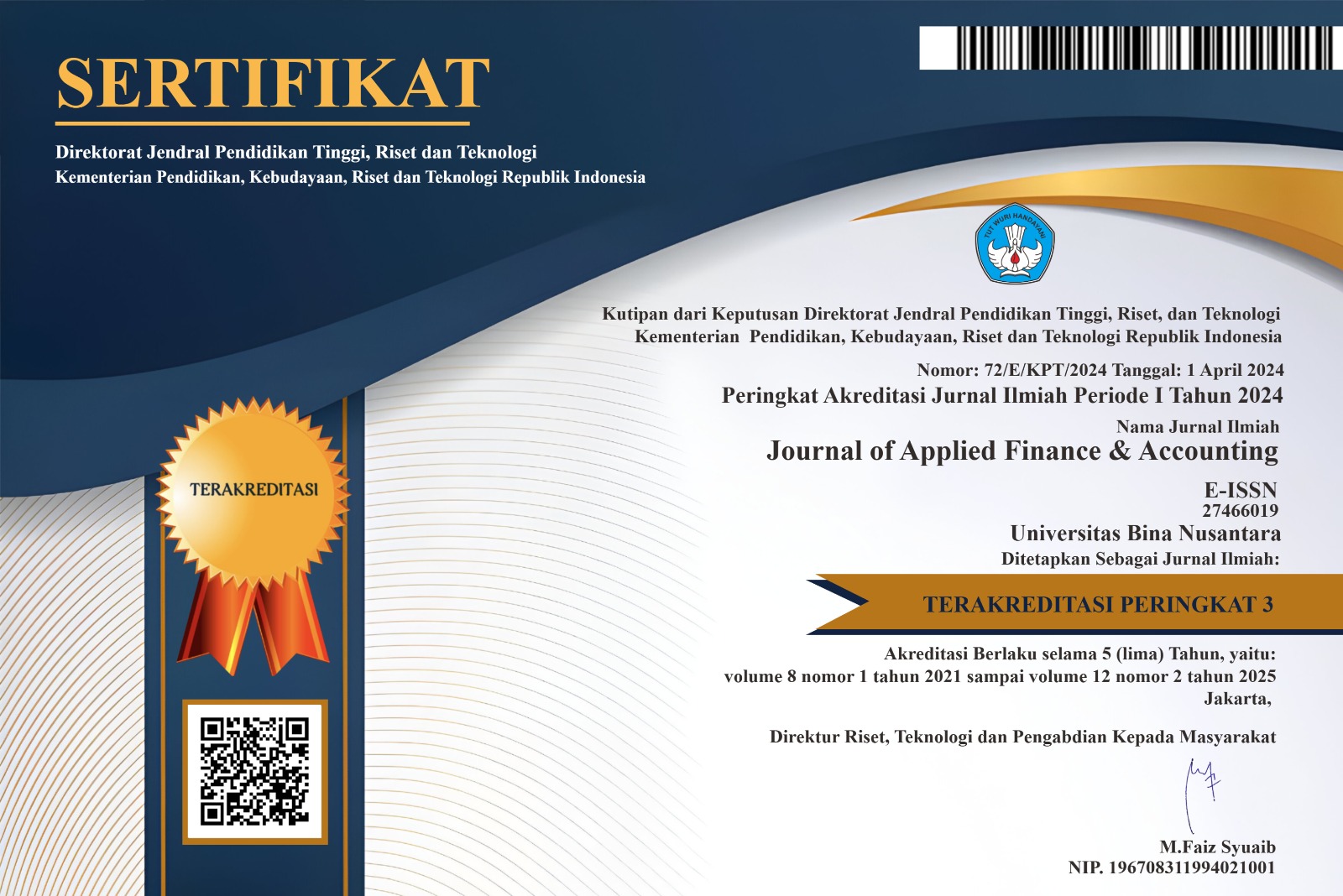FINANCIAL RESTRUCTURING DRIVEN BY SINGLE PRESENCE POLICY (SPP) (A CASE STUDY MERGER AT PT. BANK NIAGA TBK AND LIPPO BANK TBK)
DOI:
https://doi.org/10.21512/jafa.v5i2.792Keywords:
financial restructuring, single presence policy, merger, Indonesian banking architecture.Abstract
The issuance of Single Ownership Policy stated in PBI No. 8/16//PBI/2006 has an implication on the controlling shareholders in more than one bank. The shareholders are given three choices to make adjustment of their structure of ownership in order to match it with the single ownership policy. One of the choices available is merger. At one side, merger can increase its capital and minimize the number of existing banks. On the order side, merger can also result in monopoly that inflicts loss to the fair business competition. The first objective of Financial Restructuring or Merger is to take measures that avert the impending insolvency and that ensure the sort-term survival of the business. This is the prerequisite for a sustainable restructuring process. The medium and long term goal of financial restructuring is reestablishment of a healthy and solid capital structure. In Bank Niaga and Lippo Bank merger process was driven by Single Presence Policy which normatively obligates the controlling share holders of a bank to consolidate its share possession by divesting their share, merging or even forming a holding company. One of the existing controlling share holder by far already got impacted by this policy is Khazanah National Berhad, a foreign investor from Malaysia, who used to control Bank Niaga and Lippo Bank. The SPP indicated its implementation in Indonesia, which foremost align with vision of Indonesian Banking Architecture which is to designate healthy, strong and dynamic national banking structure.
Downloads
Published
Issue
Section
License
Authors who publish with this journal agree to the following terms:
Authors retain copyright and grant the journal right of first publication with the work simultaneously licensed under a Creative Commons Attribution License that allows others to share the work with an acknowledgement of the work's authorship and initial publication in this journal.
Authors are able to enter into separate, additional contractual arrangements for the non-exclusive distribution of the journal's published version of the work (e.g., post it to an institutional repository or publish it in a book), with an acknowledgement of its initial publication in this journal.
Authors are permitted and encouraged to post their work online (e.g., in institutional repositories or on their website) prior to and during the submission process, as it can lead to productive exchanges, as well as earlier and greater citation of published work (See The Effect of Open Access).




